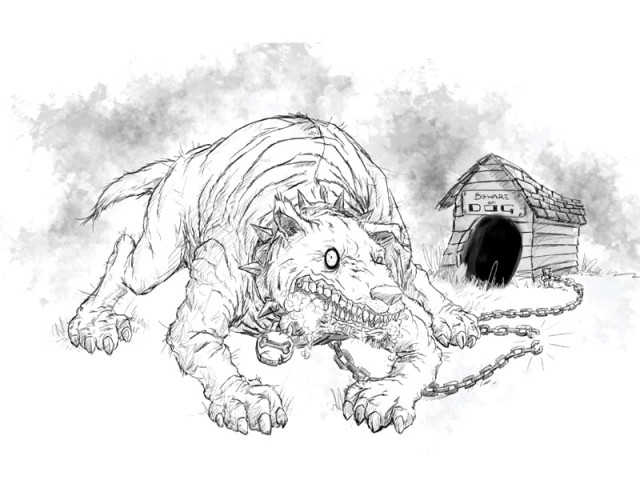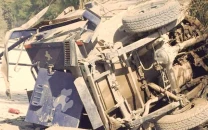Bite me: Rabies, a dog’s bite is far worse than its bark
An infected patient will exhibit signs of hydrophobia or aerophobia.

Bite me: Rabies, a dog’s bite is far worse than its bark
If your neighbourhood dog has just given birth, it would be wise to stay away. Doctors believe that the new mother could feel insecure and would do anything to protect her litter, like bark, scratch or bite.
Around 40 patients flock to the rabies immunisation clinic at Jinnah Postgraduate Medical Centre (JPMC) every day. The doctors have to deal with everything from dog bite to cat scratches, rat and donkey attacks. They claim that every patient needs to be immunised as rabies is an extremely fatal virus once it reaches the central nervous system and the symptoms begin to show. The infection is untreatable and the patient can die within days.
According to the World Health Organisation (WHO), rabies is a zoonitc disease as it is transmitted to humans from animals. It usually infects domestic and wild animals who act as vectors or transmitters. The infection can spread through their saliva.
So far, no medical tests can diagnose the patient with the infection before it spreads unless the patient starts exhibiting rabies-specific symptoms such as hydrophobia or aerophobia.
JPMC’s emergency department set up one of the first units for rabies immunisation and established a clinic which met the WHO criteria nearly 21 years ago.
It provides free of cost treatment to approximately 12,000 to 15,000 patients a year.
In Pakistan, doctors claim that domestic animals, including dogs, cats and horses, are direct carriers of the virus. At a WHO seminar last year, it was estimated that around 5,000 people died of rabies every year in the country.
However, the doctors at JPMC’s immunisation clinic said that it was imperative for the patient to be immunised on time. “When people treat the bites and scratches at home, their chances of contracting the virus increase,” said a staff nurse.
Dr Seemin Jamali, the head of the ER and JPMC’s executive joint director, said that the number of patients fell when the Karachi Municipal Corporation (KMC) started the stray-dog campaigns in residential areas.
KMC carries out three to four monthly campaigns all over the city to kill stray dogs. Dr Shaukat Zaman, the senior director of municipal services at KMC, explained that granules of strychnine hydrochloride were kept in gulab jamuns or chunks of meat and left as bait for hungry dogs.
These campaigns are now also carried out by the District Municipal Corporations.
In 2010, 13,520 patients were brought to JPMC for dog bite while in 2009 around 15,870 patients came to the immunisation clinic. In 2008 and 2007, approximately 14,207 and 13,010 patients came to the clinic complaining about dog bite. Depending on their location and accessibility, people also go to Abbasi Shaheed Hospital and Civil hospital.
In New Karachi, which is known for stray dogs and dog bites, Sanitation Officer Hassam Jalali said that since dogs breed quickly, immunisation needs to take place every two months. “In the last campaign, 252 dogs were killed,” he said. “Nazimabad and Saddar are also breeding grounds for dogs.” No data has been collected by hospitals or KMC to show which areas have the most number of rabies or dog-bite cases.
While the city administration insists on killing stray dogs, doctors suggest that it was better to focus on taking precautionary measures.
Published in The Express Tribune, May 17th, 2012.



















COMMENTS
Comments are moderated and generally will be posted if they are on-topic and not abusive.
For more information, please see our Comments FAQ